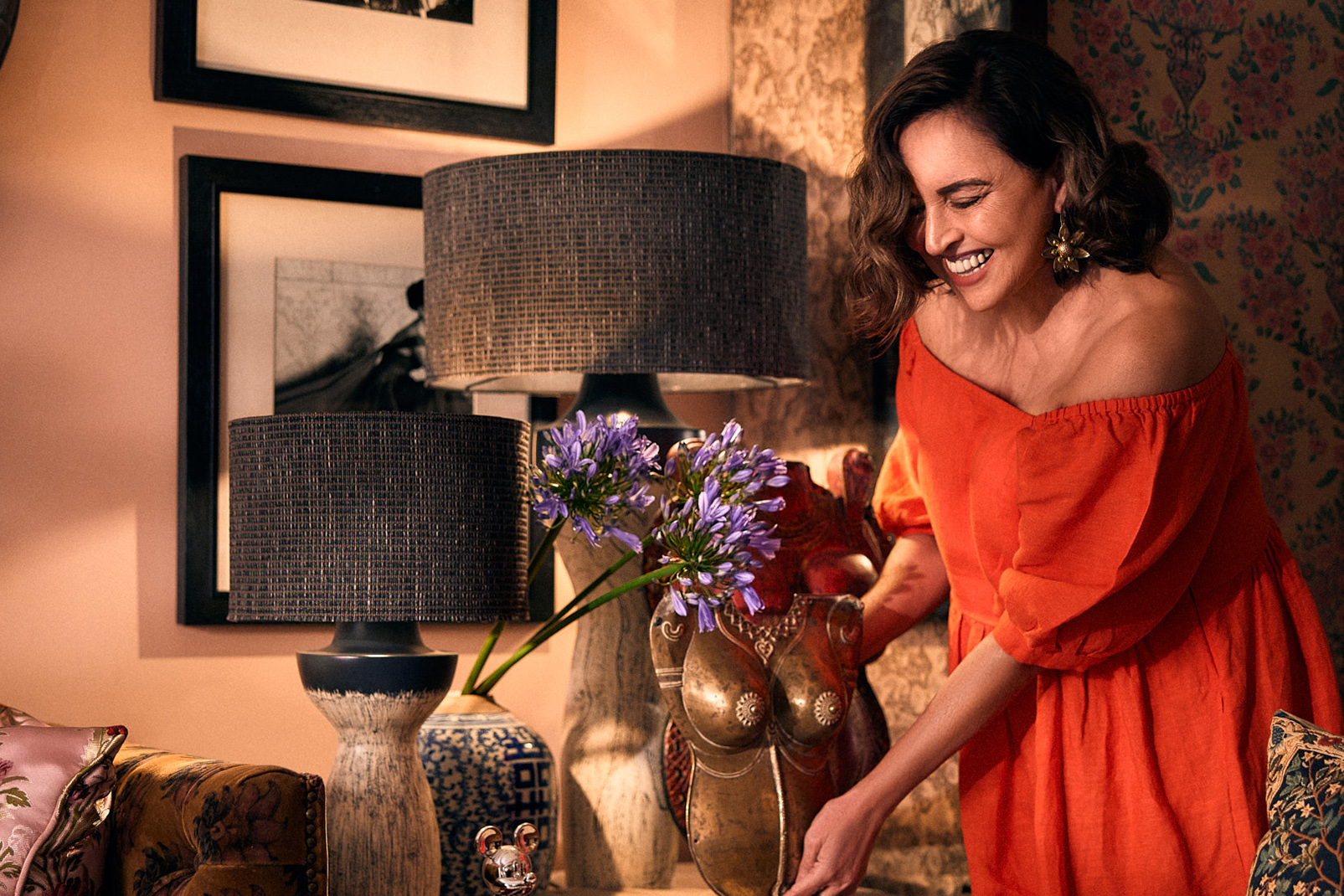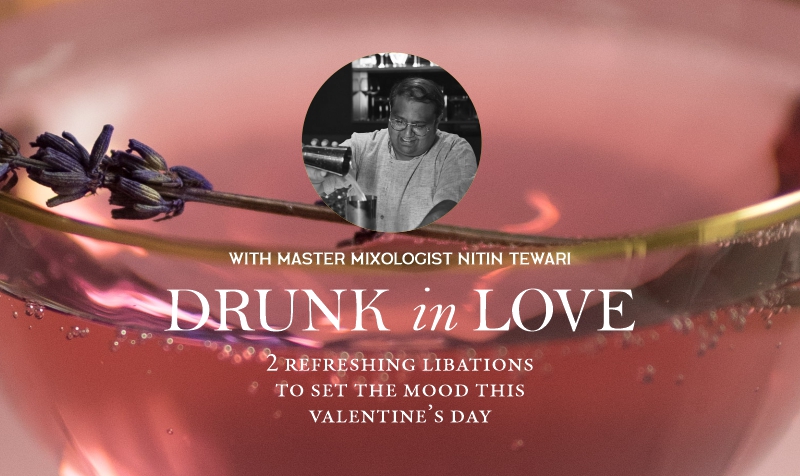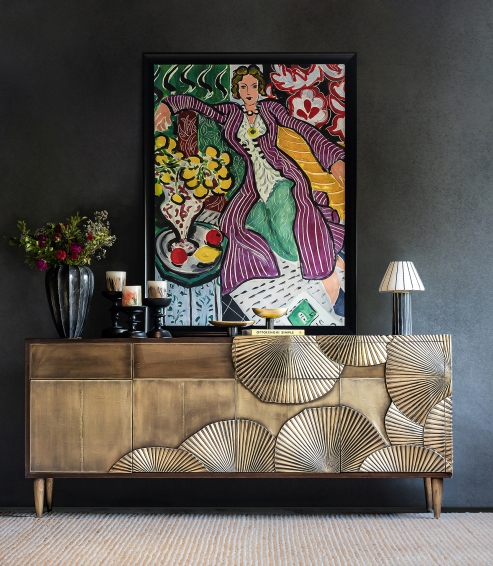We use cookies to make your experience better. To comply with the new e-Privacy directive, we need to ask for your consent to set the cookies. Learn more.
MASTERS OF MODERN ART – MATISSE AND PICASSO

Modern art is the creative world’s response to the rationalist practices and perspectives of the Industrial Age at the turn of the 20th century. Artists worked to represent their experience of the “modern” life in innovative ways, defining what exactly art should be and do for a culture.
One of the first artists to step away from traditional painting was Henri Matisse, who led Fauvism in the 1900’s. Henri Matisse and Pablo Picasso emerged as masters of modern art – their art inevitably interpreted in relation to their eventful life stories. Infamous as rivals, but more contemporaries in nature, Matisse and Picasso developed a new visual language that gave birth to Fauvism and Cubism – the most popular art movements the world has seen till today.
A LOOK AT FAUVISM AND MATISSE
“To copy the objects in a still life is nothing. One must render the emotions they awaken.”
– Henri Matisse

“Joy of Life” (Le Bonheur de Vivre), Henri Matisse, 1905
Source: https://www.theartstory.org/artist/matisse-henri/artworks/)
A master of Fauvism, Henri Matisse’s striking departure from the artistic conventions of his day left an indelible mark on art history. Celebrated as “les fauves”, or the “wild beasts”, Fauvist artists painted with a boisterous use of colours that had no basis in nature. Matisse’s ideas on colour and composition, his art philosophies and forms continue to inspire contemporary artists till today.
Born in a family of heirloom weavers in Northern France, Matisse was greatly influenced by the bright colours and patterns of local textiles. The artist’s early works show Matisse was inspired by many – Cezanne, Van Gogh, Ganguin, and Rodin, though Cezanne claimed the lion’s share of his devotion. Colour and composition were central to all Fauvist works; colours were used to convey emotion rather than a specific scene. Hence, skies were red, faces were green, and plants were purple.

Portrait of Madame Matisse (The Green Stripe), Henri Matisse, 1905
Source: https://g.co/arts/gfMBJ4ZNPFpC5EYF6
In Woman with a Hat, brilliant colours dominate the artwork, expressing the joy he felt in painting the woman. Matisse’s work in the 1910’s was all about bright, expressive strokes and planes of colour with an attention to line. Simultaneous to painting masterpieces like La Danse, Matisse also faced critical scorn, difficulty in selling his work, and even having one of his paintings, Nu Bleu, burned in protest at the Armory Show in Chicago in 1913.

Woman with a Hat (Femme au Chapeau), 1905, by Henri Matisse
Source: https://www.henrimatisse.org/woman-with-a-hat.jsp
Fauvists are less concerned with the originality of the subject matter, and more passionate about expression through colour and form. The Favues drew directly from the world around them, and focused on portraiture, landscapes, and pattern with an emphasis on visual impact of colour rather than symbolism.

La Danse, Henri Matisse, 1910
Source: https://www.henrimatisse.org/images/gallery/the-dance.jpg
In the 1920’s Matisse created many works in collaboration with artists worldwide. The 1930’s brought commitment and boldness to his work. Large Reclining Nude was created and indicates where the next big thing was headed for the artist – simplified forms and cutouts. Part genius, part whimsy, Matisse’s art has successfully managed to reimagine the world around him – adding colour and pattern to a bold aesthetic.

Large Reclining Nude, Henri Matisse, 1935
Source: http://www.matissepaintings.org/pink-nude/
A LOOK AT CUBISM AND PICASSO
“Art is a lie that makes us realize the truth.”
- Pablo Picasso

Le Reve (The Dream), Pablo Picasso, 1932
Source: https://www.pablopicasso.org/the-dream.jsp
The most dominant and influential artist of the 20th century, Picasso burst onto the French art scene and pioneered art styles like Cubism, Symbolism, and Surrealism with unparalleled magnitude. His prolific works include over 20,000 paintings, sculptures, prints, drawings, ceramics, and theatre sets and costumes. Born in Malaga, Spain in 1897, Picasso studied art briefly in Madrid and Barcelona, where he became closely acquainted with a group of modernist poets, writers, and artists.
https://www.metmuseum.org/art/collection/search/488596

The Blind Man’s Meal, Pablo Picasso, 1903
Source: http://art-picasso.com/1903_12.html
His artistic genius was a confluence of influences – from Cezanne to Rousseau, archaic to tribal art – art where he deconstructed the conventions of perspective that had dominated the world of painting since the Renaissance. The artist’s paintings from late 1901 referred to as his Blue period; depict themes of loneliness, poverty and despair, as illustrated in The Blind Man’s Meal.
Later on, Picasso became more inclined towards pleasant themes like carnival performers, harlequins, and clowns, and abandoned the grave blues for the vivid reds. In Paris, he found dedicated patrons in Gertrude and Leo Stein, whose Saturday evening salons were an incubator for modern artists in Paris. The influence of African art is explicit in the artist’s masterpiece Les Demoiselles d’Avignon, 1907 – a painting that formed the nascent stage for the introduction of Cubism.

Les Demoiselles d’Avignon, Pablo Picasso, 1907
Source: https://www.moma.org/collection/works/79766
His encounter with Surrealism and Analytic Cubism encouraged both the soft forms and tender eroticism of portraits of his mistress Marie Therese Walter, but also the starkly angular imagery of Guernica, the century’s most famous anti-war painting.

Guernica, Pablo Picasso, 1937
Source: https://www.pablopicasso.org/guernica.jsp
With its fragmentation and two-dimensional planes, Analytic Cubism was born and developed by Picasso and Georges Braque, where tactile components were included in their works, and sometimes, trompe-l’oeil effects were used to create the illusion of real objects and textures. Picasso’s Bottle and Wine Glass on a Table, 1912 is an early example of Synthetic Cubism, a papier colle` in which he pasted newsprint and coloured paper onto canvas.

Bottle and Wine Glass on a Table, Pablo Picasso, 1912
Source: https://www.metmuseum.org/art/collection/search/488476
His life being a virtual progression of modernism, Picasso’s artistic legacy continues to resonate today throughout the world, leaving all spellbound. Even into the 80’s and 90’s, Picasso produced an enormous number of works and reaped the financial benefits of his success by amassing a personal fortune and a stunning collection of his own art. The liberal concepts of Cubism developed by the artist paved the way for Dadaism and Surrealism for artists pursuing abstraction in Europe, America, and Russia.
Modern art is the creative world’s response to the rationalist practices and perspectives of the Industrial Age at the turn of the 20th century. Artists worked to represent their experience of the “modern” life in innovative ways, defining what exactly art should be and do for a culture.
One of the first artists to step away from traditional painting was Henri Matisse, who led Fauvism in the 1900’s. Henri Matisse and Pablo Picasso emerged as masters of modern art – their art inevitably interpreted in relation to their eventful life stories. Infamous as rivals, but more contemporaries in nature, Matisse and Picasso developed a new visual language that gave birth to Fauvism and Cubism – the most popular art movements the world has seen till today.
A LOOK AT FAUVISM AND MATISSE
“To copy the objects in a still life is nothing. One must render the emotions they awaken.”
– Henri Matisse


“Joy of Life” (Le Bonheur de Vivre), Henri Matisse, 1905
A master of Fauvism, Henri Matisse’s striking departure from the artistic conventions of his day left an indelible mark on art history. Celebrated as “les fauves”, or the “wild beasts”, Fauvist artists painted with a boisterous use of colours that had no basis in nature. Matisse’s ideas on colour and composition, his art philosophies and forms continue to inspire contemporary artists till today.
Born in a family of heirloom weavers in Northern France, Matisse was greatly influenced by the bright colours and patterns of local textiles. The artist’s early works show Matisse was inspired by many – Cezanne, Van Gogh, Ganguin, and Rodin, though Cezanne claimed the lion’s share of his devotion. Colour and composition were central to all Fauvist works; colours were used to convey emotion rather than a specific scene. Hence, skies were red, faces were green, and plants were purple.
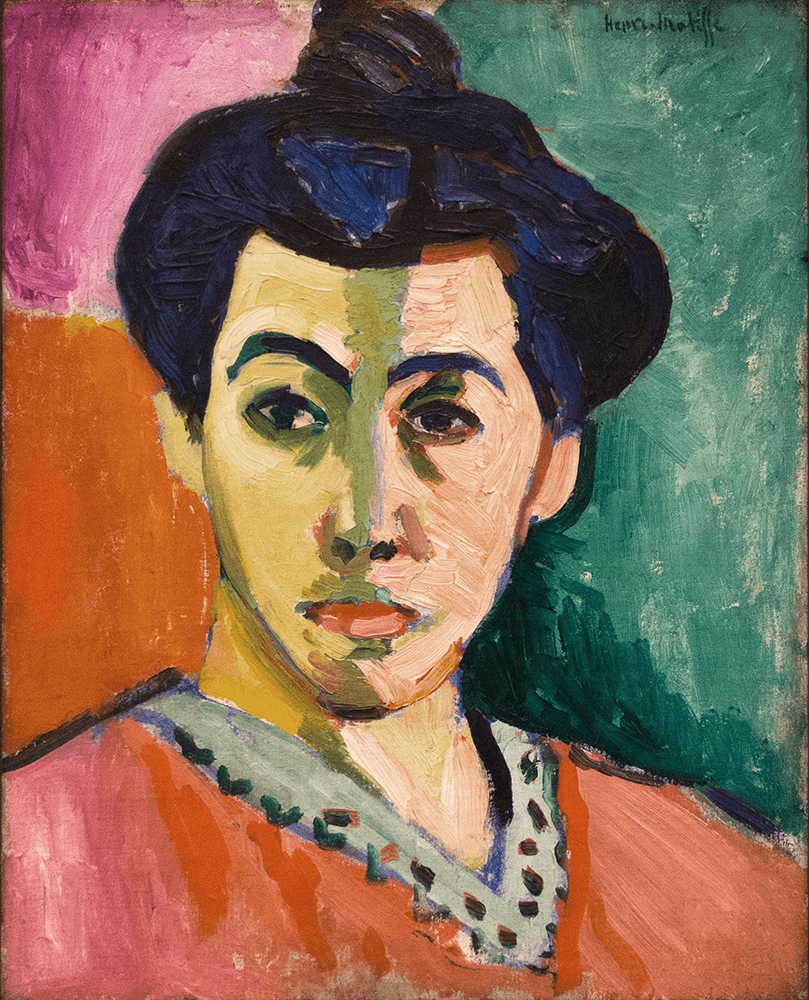

Portrait of Madame Matisse (The Green Stripe), Henri Matisse, 1905
In Woman with a Hat, brilliant colours dominate the artwork, expressing the joy he felt in painting the woman. Matisse’s work in the 1910’s was all about bright, expressive strokes and planes of colour with an attention to line. Simultaneous to painting masterpieces like La Danse, Matisse also faced critical scorn, difficulty in selling his work, and even having one of his paintings, Nu Bleu, burned in protest at the Armory Show in Chicago in 1913.


Woman with a Hat (Femme au Chapeau), 1905, by Henri Matisse
Fauvists are less concerned with the originality of the subject matter, and more passionate about expression through colour and form. The Favues drew directly from the world around them, and focused on portraiture, landscapes, and pattern with an emphasis on visual impact of colour rather than symbolism.
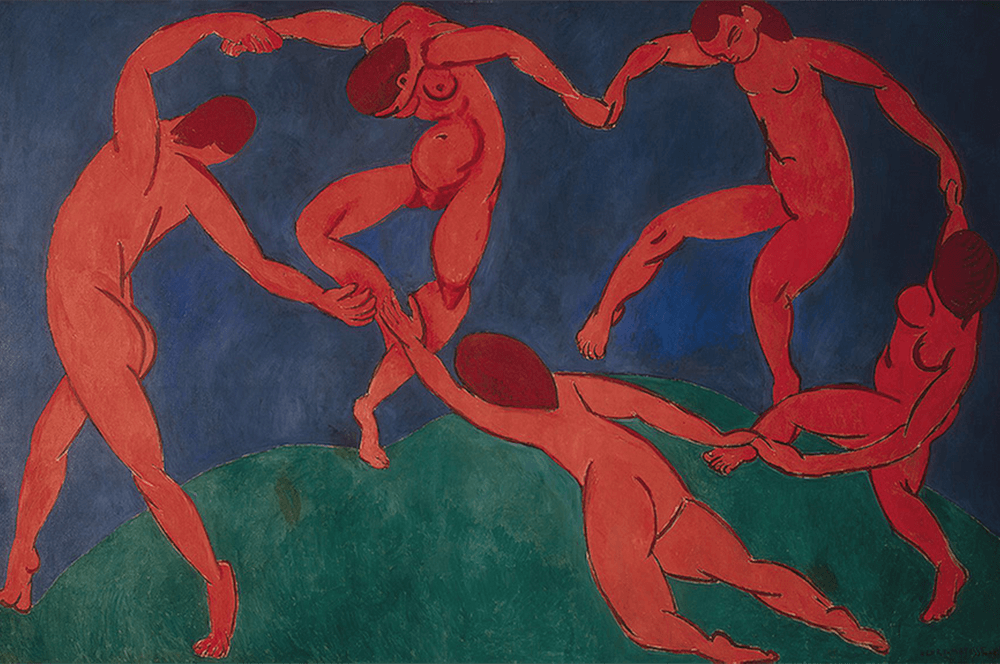

La Danse, Henri Matisse, 1910
Fauvists are less concerned with the originality of the subject matter, and more passionate about expression through colour and form. The Favues drew directly from the world around them, and focused on portraiture, landscapes, and pattern with an emphasis on visual impact of colour rather than symbolism.
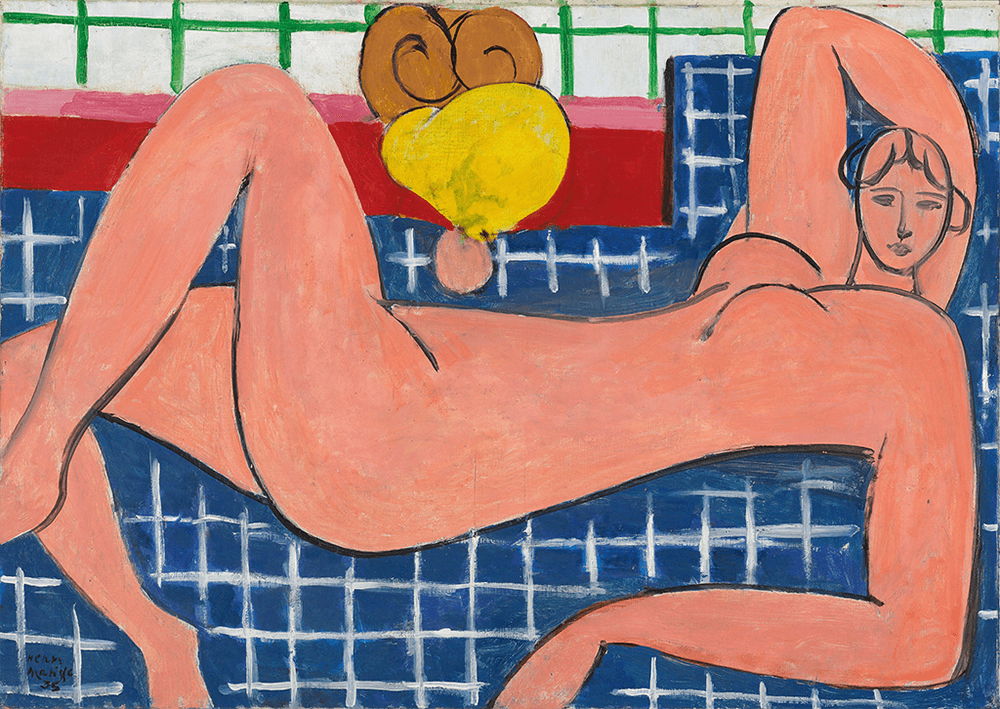

Large Reclining Nude, Henri Matisse, 1935
Fauvists are less concerned with the originality of the subject matter, and more passionate about expression through colour and form. The Favues drew directly from the world around them, and focused on portraiture, landscapes, and pattern with an emphasis on visual impact of colour rather than symbolism.
A LOOK AT CUBISM AND PICASSO
“Art is a lie that makes us realize the truth.”
- Pablo Picasso
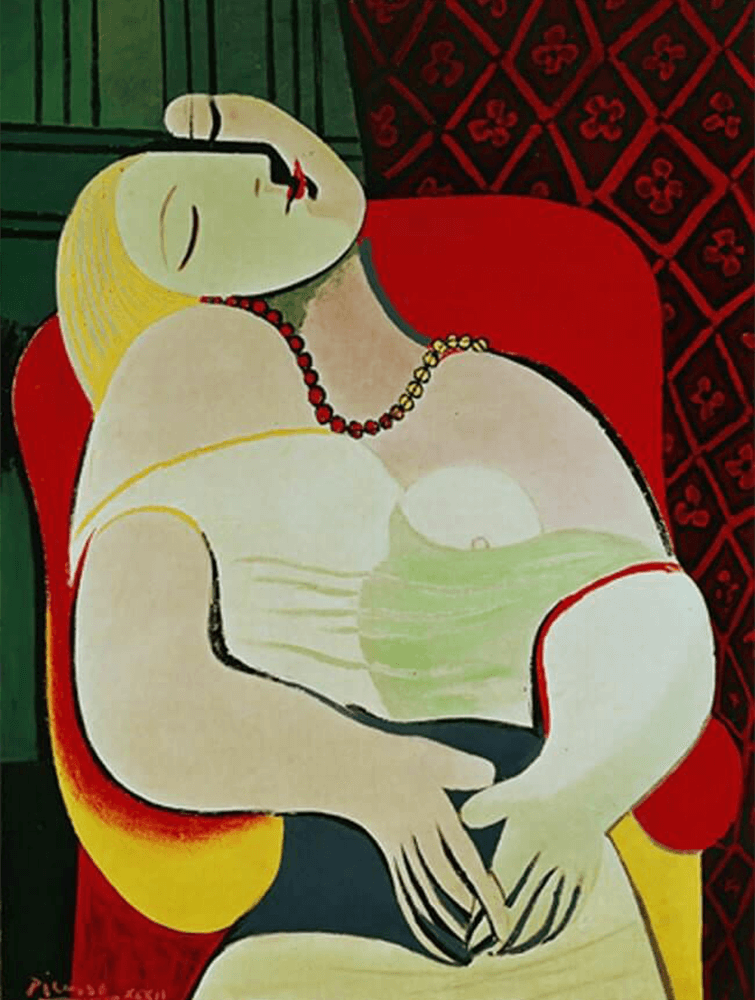

Le Reve (The Dream), Pablo Picasso, 1932
The most dominant and influential artist of the 20th century, Picasso burst onto the French art scene and pioneered art styles like Cubism, Symbolism, and Surrealism with unparalleled magnitude. His prolific works include over 20,000 paintings, sculptures, prints, drawings, ceramics, and theatre sets and costumes. Born in Malaga, Spain in 1897, Picasso studied art briefly in Madrid and Barcelona, where he became closely acquainted with a group of modernist poets, writers, and artists.
https://www.metmuseum.org/art/collection/search/488596
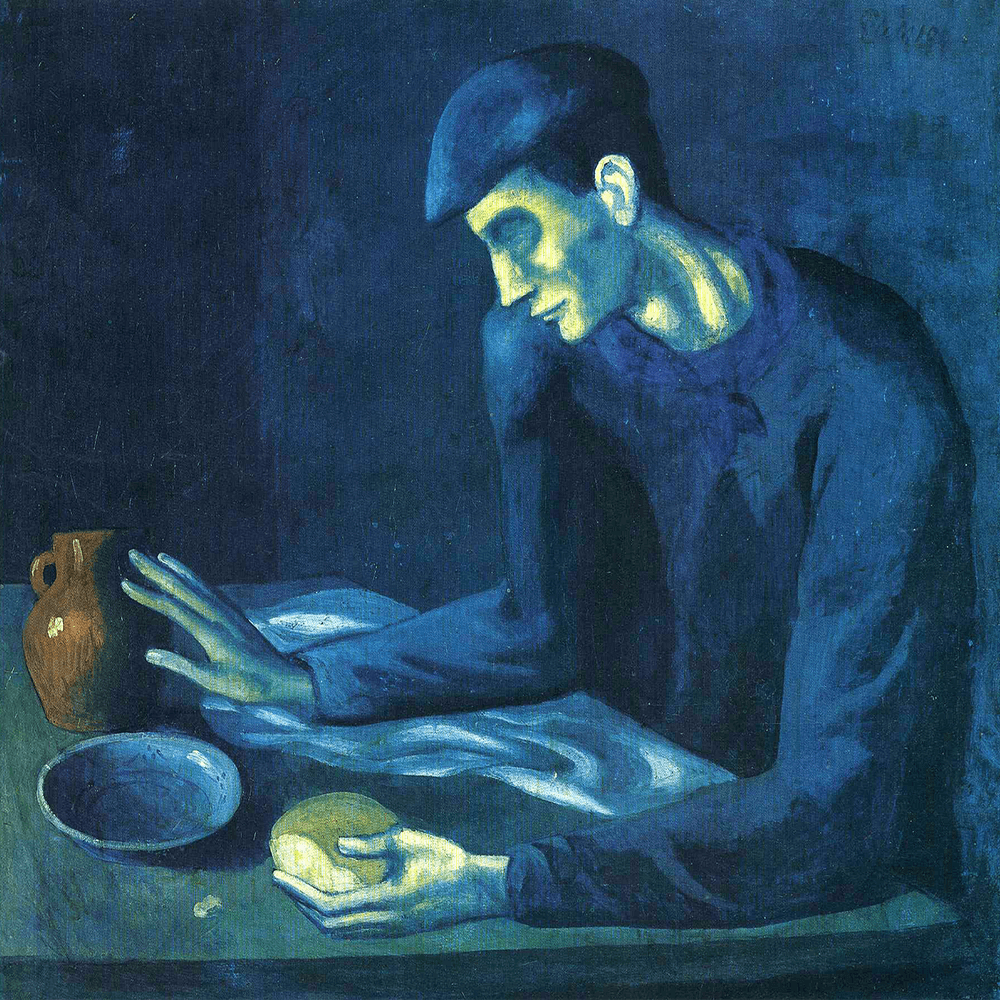

The Blind Man’s Meal, Pablo Picasso, 1903
His artistic genius was a confluence of influences – from Cezanne to Rousseau, archaic to tribal art – art where he deconstructed the conventions of perspective that had dominated the world of painting since the Renaissance. The artist’s paintings from late 1901 referred to as his Blue period; depict themes of loneliness, poverty and despair, as illustrated in The Blind Man’s Meal.
Later on, Picasso became more inclined towards pleasant themes like carnival performers, harlequins, and clowns, and abandoned the grave blues for the vivid reds. In Paris, he found dedicated patrons in Gertrude and Leo Stein, whose Saturday evening salons were an incubator for modern artists in Paris. The influence of African art is explicit in the artist’s masterpiece Les Demoiselles d’Avignon, 1907 – a painting that formed the nascent stage for the introduction of Cubism.
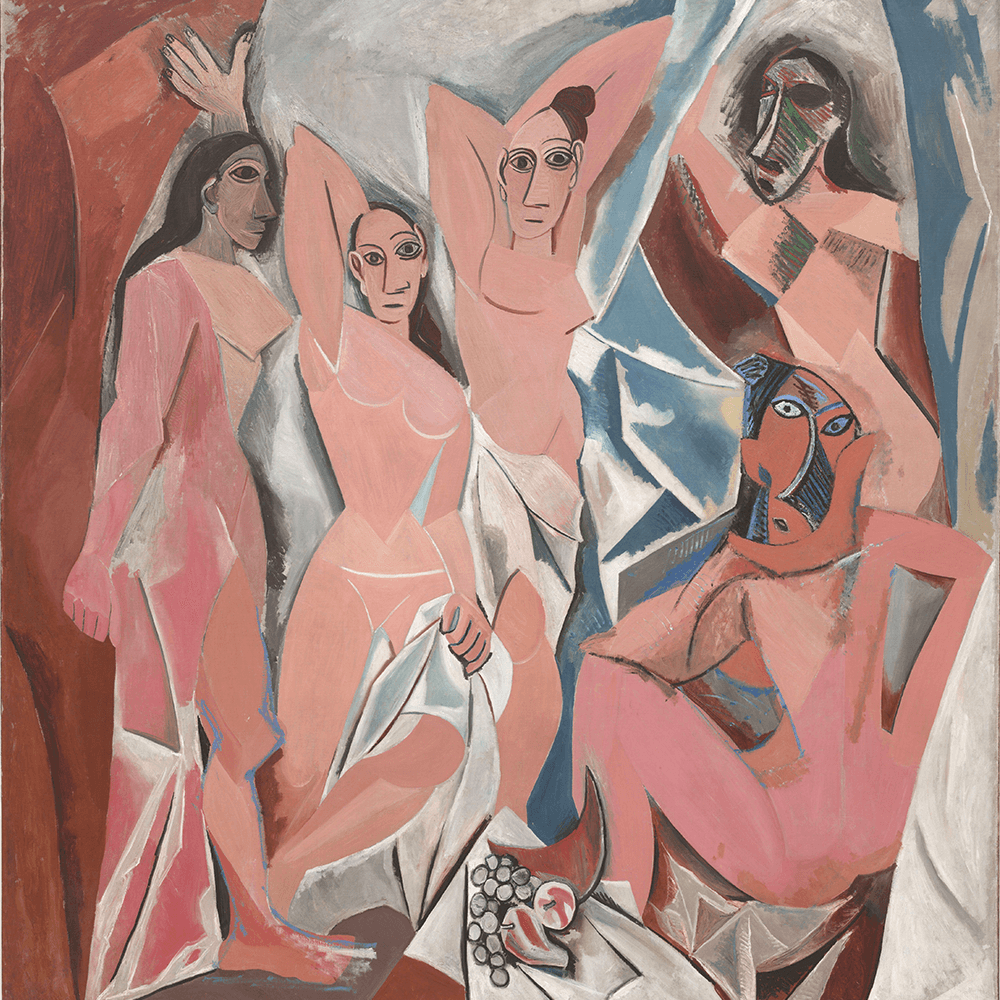

Les Demoiselles d’Avignon, Pablo Picasso, 1907
His encounter with Surrealism and Analytic Cubism encouraged both the soft forms and tender eroticism of portraits of his mistress Marie Therese Walter, but also the starkly angular imagery of Guernica, the century’s most famous anti-war painting.
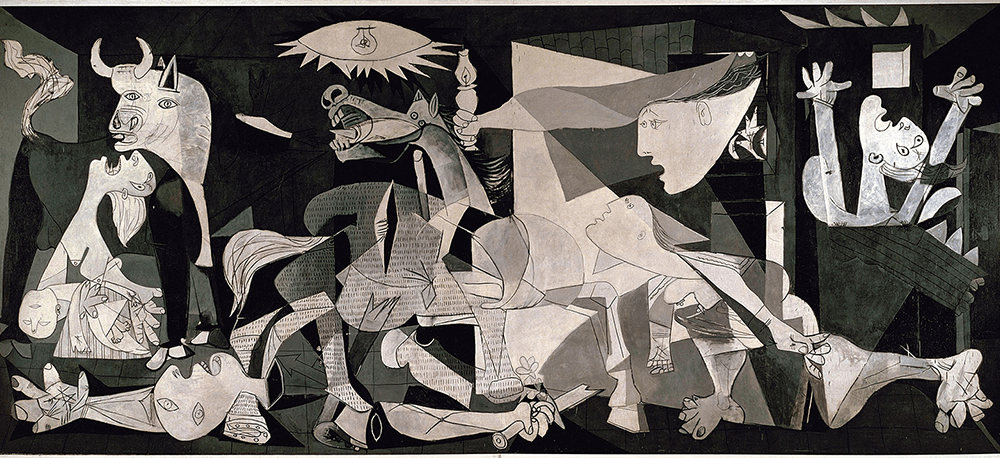

Guernica, Pablo Picasso, 1937
With its fragmentation and two-dimensional planes, Analytic Cubism was born and developed by Picasso and Georges Braque, where tactile components were included in their works, and sometimes, trompe-l’oeil effects were used to create the illusion of real objects and textures. Picasso’s Bottle and Wine Glass on a Table, 1912 is an early example of Synthetic Cubism, a papier colle` in which he pasted newsprint and coloured paper onto canvas.
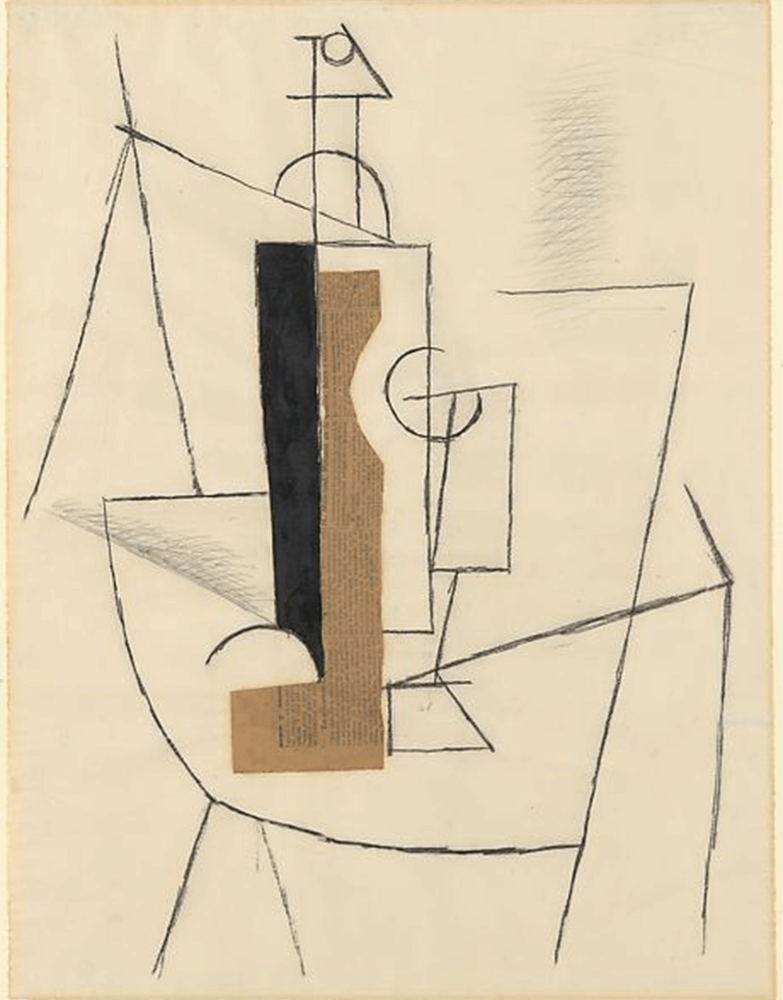

Bottle and Wine Glass on a Table, Pablo Picasso, 1912
His life being a virtual progression of modernism, Picasso’s artistic legacy continues to resonate today throughout the world, leaving all spellbound. Even into the 80’s and 90’s, Picasso produced an enormous number of works and reaped the financial benefits of his success by amassing a personal fortune and a stunning collection of his own art. The liberal concepts of Cubism developed by the artist paved the way for Dadaism and Surrealism for artists pursuing abstraction in Europe, America, and Russia.
